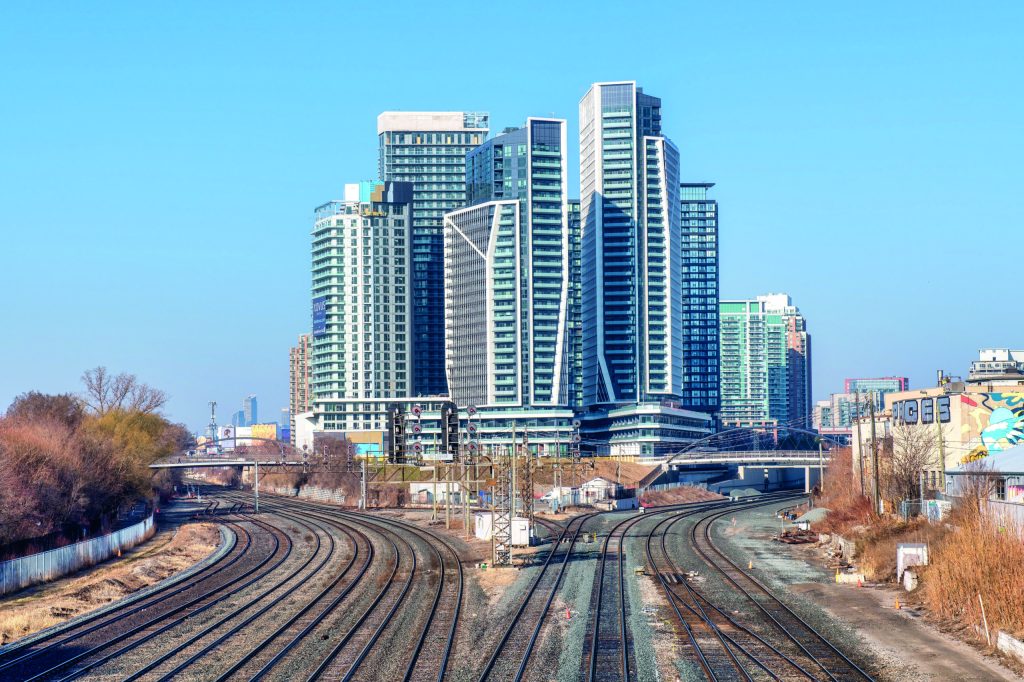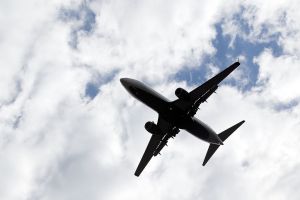It’s difficult to get people to take the idea of Canadian world domination seriously — and I admit the notion snuck up on me too. My first inkling came last year, when I found out Toronto was on track to overtake Chicago as the city with the second-largest number of skyscrapers in North America, New York being the first. But then came the news about Kansas City Southern, at which point I realized: Canada is on the march. You’ve probably never heard of Kansas City Southern. I hadn’t either, and my knowledge of railroads — that’s what KCS is — is well above average. Here are two of the three things you need to know about it: 1) The KCS originates in Kansas City and heads south. You might have figured that out for yourself, I suppose, but railroad names can be deceptive. More on that directly. 2) The Canadian National and Canadian Pacific railways are competing with one another to buy it. From that fact alone one may deduce: something’s up.
About those railroad names. Many railroads in the western US — western being defined as west of Chicago — aspired to cross the continent and reach the West Coast, as evidenced by ‘Pacific’ or some other westerly destination in their names. They didn’t always get there. The Chicago, Rock Island and Pacific, made famous in song as the ‘Rock Island Line’, got only as far west as Denver before calling it a day. (To be fair, it did operate a through-passenger service to Los Angeles in partnership with the Southern Pacific.) The St Louis-San Francisco Railway, better known as ‘the Frisco’, sputtered out in Floydada, Texas.
The Kansas City Southern chose a more modest title. Had it conked out two miles south of the KC city limits, management might have told the shareholders, ‘Well, we didn’t lie to you.’ In fact the company had continent-spanning ambitions that it ultimately achieved. Today, the KCS extends through Texas and deep into Mexico, with service to Mexico City, Veracruz on the Gulf of Mexico and the Pacific Coast, plus a branch to New Orleans.
Which brings us to the third thing you need to know about the KCS: the Canadian Pacific, by virtue of previous US railroad acquisitions, owns trackage from Canada to Kansas City.
You see where this is headed. If the CP succeeds in buying the KCS and joining the two systems together, it will be the only North American railroad connecting Canada, the US and Mexico, spanning the continent not only from east to west (CP service extends from Vancouver to Saint John, New Brunswick) but also from north to south.
We’re not done yet. Seeing what the CP was up to and presumably freaking out, the Canadian National, Canada’s other major railroad, has now made a competing bid for the KCS. The CN already owns a major north-south rail route through the US, having previously purchased the Illinois Central and other lines, and it now operates freight service from Canada through Chicago to New Orleans, although not — this is a crucial shortcoming — to Mexico.
Mexico is critical. Canadian rail moguls surely calculate as follows: the US is alarmed by China and would like to bring manufacturing closer to home. The economic realities being what they are, many factories are likely to wind up in Mexico. Meanwhile, Canada stands to benefit from global warming, with a lengthening growing season in the northern latitudes while the traditional US breadbasket is threatened by water shortages.
As a result, North American freight traffic, heretofore thought of mainly as a matter of moving things east and west, will shift decisively to north and south, with goods made in Mexico heading for the US and Canada while Canadian agricultural products travel in the opposite direction. Therefore, whoever controls the rail routes between Canada and Mexico will rule. Whether the CP or the CN will succeed in acquiring the KCS is too early to say; US authorities will have something to say about the matter. But as things stand, a strategically important chunk of the continent’s freight rail infrastructure will come under Canadian control.
Eh, it’s just railroads, you say. If only. There’s Toronto to think about too.
Any effort to cast Toronto as a nascent global city — because that’s what it is — inspires the reaction: Toronto? But we may as well get used to the idea.
Here it may be instructive to compare Toronto with Chicago. Both are Great Lakes cities of similar climate, roughly similar size (for the moment, the Chicago metropolitan area, although not the city itself, is bigger), and — or so I once naively thought — similar prospects.
Of particular importance in that last respect is their location on the Great Lakes, which hold 21 percent of the world’s surface fresh water supply. On the evidence to date, the major impact of climate change on the region is likely to be excessive rainfall, with consequent high lake levels and erosion — in other words, too much fresh water, which is not the worst problem to have. It occurred to me once to describe the Great Lakes as the Mediterranean of our warming world, which may be putting things a bit grandly. My point is, if you buy into what seems to be the emerging consensus — namely, that global warming is real, the chances of reversing it are pretty much zip and the realistic course is to prepare as best we can — the Great Lakes are a good place to be.
But not all Great Lakes cities will benefit equally. Judging from the current trend, the winners will be on the Canadian side and the laggards will be on the American side. The Toronto-versus-Chicago skyscraper count is an indication of this. As of last year, according to the Council on Tall Buildings and Urban Habitat, Chicago had 126 skyscrapers plus 19 proposed or under construction, for a total of 145 — second in North America behind New York at 284. Number three, Toronto, had 67 skyscrapers, with 31 under construction and 59 proposed — which comes to 157 if everything gets built. Granted, that was before the pandemic. But you see how things are headed.
The reason Toronto is building so many skyscrapers, most of them condo towers, is that its population is booming. From 2010 to 2020, metropolitan Toronto grew by almost 70,000 people per year, far surpassing any metropolitan area in the midwestern or northeastern US including New York.
The reasons for this are complicated but boil down to two things. First, Toronto has become the New York of Canada — the country’s leading financial, business and media center, with all the benefits that accrue thereto. This appears to have been largely unintentional, as demonstrated by the Bank of Montreal, which now has its main offices in Toronto — not because Toronto aggressively pursued it, but because the Quebec separatist movement pushed it out of Montreal. Second, Toronto benefits from Canada’s unusual immigration policy, which sets a target for immigrants rather than a cap and directs them to regions that want them. Thirty-five percent of newcomers to Canada settle in the Toronto area, making the city one of the most diverse in the world.
The result of all this is that Toronto, without really meaning to, is becoming — some would say has become — a global player. A few years ago it overtook Chicago to become the fourth-largest city in North America — and by some measures Toronto now equals or overshadows Chicago on the world stage. To hear Torontonians talk, no one is more surprised about this than they are. In his book Perfect City, the University of Toronto urbanologist Joe Berridge calls Toronto ‘the accidental metropolis’.
Similarly, Canada seems poised to become an accidental…well, ‘world power’ would be overstating matters. But a country of historically modest ambitions now unexpectedly finds itself playing a larger role. Already it’s restructuring the economy of our Rust Belt — and not just by reorganizing the railroads. The Bank of Montreal, for instance, has long owned what’s now called BMO Harris Bank in Chicago, which over the years has become one of the largest banks in the Midwest. More recently, the Canadian Imperial Bank of Commerce purchased another Chicago bank and renamed it CIBC Bank USA, which has offices throughout the US.
In the future, the role of Chicago and other Midwestern cities increasingly may be to serve as the headquarters for the American holdings of Canadian firms. Naturally as an American one would have preferred things to be the other way around, or at any rate on a more even footing. One can imagine a world in which Toronto and Chicago were friendly rivals, vying for the leadership of the resurgent Great Lakes. But there seems little chance of that.
Chicago is preoccupied with its own problems — and the odds of the US adopting a rational immigration policy like the one that has powered Toronto’s growth are vanishingly small. Lacking direction, America’s industrial heartland has been adrift — and you see what mischief that has led to. Better to have it in the hands of the Canadians, who may not have a vision exactly but at least have a glimmer of a plan.
This article was originally published in The Spectator’s June 2021 World edition.


















